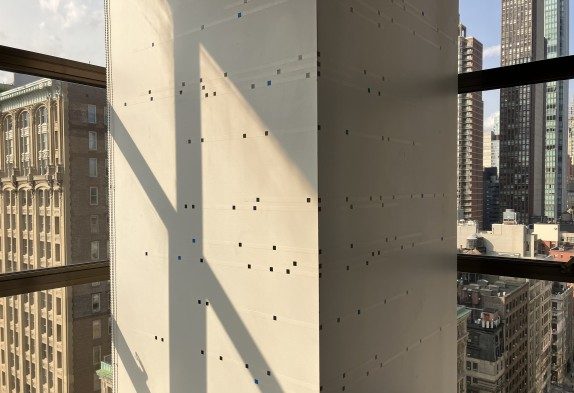Charlotte Lethbridge: Cliff Hangers, Red Herrings, and Unreliable Narrators
Artist Statement:
Film is one of the most accessible and prevalent media forms in the world. In its full-length format, it has the time that most other mediums do not. Film has the advantage of unfolding and presenting a beginning, a middle, and an end. Every shot has intent. But many of these shots go unnoticed, even though they are charged with purpose.
In these paintings, I have seized the fleeting moments that make up a film. While film has the advantage of time, painting has the power of isolation. That image was chosen to hang on the wall for a reason, and so people will stop and look. Good films, bad films, blockbusters, cult classics, I’ll pull stills from any movie. The films are, for the most part, unidentifiable by looking at the paintings. I’ve watched some of the movies and others I know only by a series of captured screenshots collected by someone on the internet. As a painter, I can take these underestimated moments and bring attention to them. Once part of a whole, these tiny, unexceptional moments now stand amplified and alone.


Q: What was the process in selecting stills?
A: I generally pick scenes that are not hugely significant to the movie. Most of the images can be characterized as the before or after, not the event – i.e. a car driving into the night or ripples on the surface of a pool. I like the scenes that no one thinks about. By isolating a single frame of a movie in a painting, I give it new significance as a singular image – not one of thousands, but one of one.


Q: How do you choose when to reveal or cover the existing nature of the fabrics you use as canvas?
A: The choice to leave portions of a canvas untouched started as I was learning how to be more restrained. Painting is not about covering a surface, but creating forms and space. Leaving raw swaths of linen allows me to create depth. I use it in the same way that I’d use paint to build an image. I’m saying that a painting is not just an image, it’s also an object.

Q: How do you consider placement and framing in your paintings?
A: The framing style incorporated in most of the Cliff Hanger paintings is something I included to mimic the aspect ratio of a screen. Paintings come in any size, but a wide and short frame is more often seen in a modern TV than a painting. I am working off images that are mostly in a widescreen format, but in reconstructing that shape I’m also referencing contemporary technology and culture through painting, a very old world method of creating an image.
The paintings with paired images reflect on time and location. When pairing those images I had it in my head that the scenes (while pulled from different stories) are existing together at the same time in the same narrative. For instance, an image of a dark house with the porch light left on (as if expecting someone to come home); and below it, that person is not going home, opting instead to get a cheap meal in a brightly lit fast food restaurant.

About the Artist:
Charlotte Lethbridge (b. 1991, New York) lives and works in Los Angeles and New York. She received her BFA from the School of Visual arts, where she studied painting, as well as graphic and interior design. Cliffhangers, Red Herrings, and Unreliable Narrators with TenBerke’ Artist Program is her first solo exhibition.




